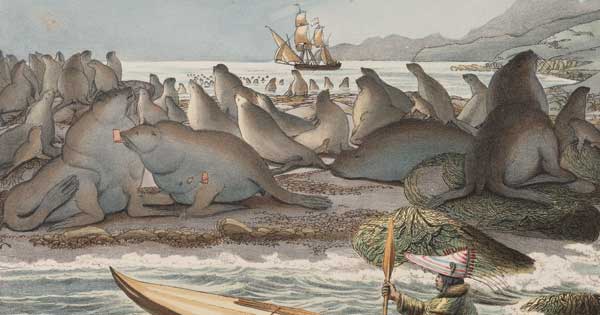
West of the Revolution: An Uncommon History of 1776, By Claudio Saunt, Norton, 283 pp., $26.95
For years, Claudio Saunt vividly recalled the summer of 1976, when as an eight-year-old boy he went to see an enormous birthday cake that had traveled cross-country to his hometown of San Francisco in honor of the U.S. Bicentennial. The cake, purportedly the world’s largest confection, stood three stories tall, weighed 35,000 pounds, and was festooned with scenes from the American Revolution. But as Saunt, now a professor of history at the University of Georgia, explains in his marvelous new book, he was betrayed by his memory. From contemporary accounts, he has learned that the cake was actually a thoroughly local affair, created by a pastry chef to celebrate the Bay Area’s own 200-year anniversary, traced to the establishment of a Spanish outpost there in 1776. As Saunt puts it: “San Francisco’s history was at such odds with the narrative being celebrated for the national Bicentennial that my fourth-grade imagination turned the cake into a tribute to events in Boston, Philadelphia, and elsewhere along the East Coast.”
West of the Revolution is Saunt’s attempt to take in what was happening at other places in North America at the moment that the 13 colonies—which together represent just four percent of the continental landmass—were declaring their independence from England. He begins his story with an episode surely unfamiliar to many readers: Russian expansion across the Bering Strait in the 1770s. But this is not mere contrarianism. Rather, Saunt explains that even as the British colonies on the other side of the continent drifted further apart from their mother country, Russian sailors were pushing into the Aleutian Islands in search of fur-bearing game such as foxes and especially sea otters; the pelts then traveled back across the ocean for eventual export to China, where this “soft gold” was prized by royal officials in Beijing. The effects of this Russian thrust closely mirrored the disastrous results of other European incursions elsewhere in North America: thousands of Indians died from imported diseases or at the hands of the determined and brutal newcomers like Captain Ivan Solov’ev, who in one particularly bloody episode, Saunt recounts, “blew up a fortified structure sheltering three hundred Aleuts and cut down the survivors with guns and sabers.”
Lest one is tempted to dismiss these incidents as a colorful sideshow to the “real” action unfolding in the East (like, say, the Boston Tea Party or the skirmishing at Lexington and Concord), Saunt explains that it was growing anxiety over the Russian presence on the Pacific coast that led directly to increased Spanish colonization in California, which included the founding of the Presidio of San Francisco on September 17, 1776. Saunt explores the repercussions of this largely forgotten imperial rivalry, marked by a failed Indian uprising against Spanish priests in San Diego and a long, fruitless walk in the desert by a Spanish expedition attempting to traverse the Colorado Plateau in hopes of forging a direct overland link between Santa Fe and the California missions.
Saunt leads us eastward across the Continental Divide, alighting at Cumberland House, a Hudson’s Bay Company post located far inland, on the border of the present-day Canadian provinces of Saskatchewan and Manitoba. Here, east of the Rocky Mountains, British traders induced their Indian customers to trap beaver by offering, in exchange for pelts, manufactured items and luxuries such as alcohol and tobacco. In time, this unceasing pressure on the rodent caused widespread ecological change, as beaver dams were left untended or disappeared altogether, which in turn remade the boreal landscape.
Next comes a visit to the Black Hills, an oasis of precipitation on the northern plains claimed by the Lakota Sioux in 1776, followed by a trip down the Mississippi to Osage country, where the Indians exploited for their own interests the river’s capricious boundary between rival Spanish and English claims. The book concludes not west of the Revolution but south of it, with a Creek delegation visiting Havana in search of Spanish protection against British encroachment in the American Southeast. This proposed alliance, built on promises of Indian overseas delivery of beef, horses, and deerskins, was soon rendered moot by the Revolution and its outcome, which was disastrous for the Creeks as well as for the other “Five Civilized Tribes.”
All the while Saunt dusts his book with wry reminders of what was taking place along the Atlantic seaboard. For instance, in September 1770, at roughly the moment that Captain Solov’ev eased his ship from its moorings at the Russian port city of Okhotsk, bound for a five-year sojourn in the Aleutians, the British soldiers charged in the Boston Massacre were preparing to stand trial (six were acquitted but two sentenced to painful branding). Likewise, according to the Lakotas’ winter count, a Sioux headman named Standing Bull discovered the Black Hills sometime between the first snows of 1775 and 1776, a period that witnessed also the publication of Thomas Paine’s Common Sense and Congress’s declaration of independence. These fleeting asides remind us that, momentous as they appear in hindsight, the events of the American Revolutionary era were simply part of a larger set of stories unfolding around the continent in the late 18th century. But in time, their reverberations would touch all corners of North America and beyond, for good and for ill.

